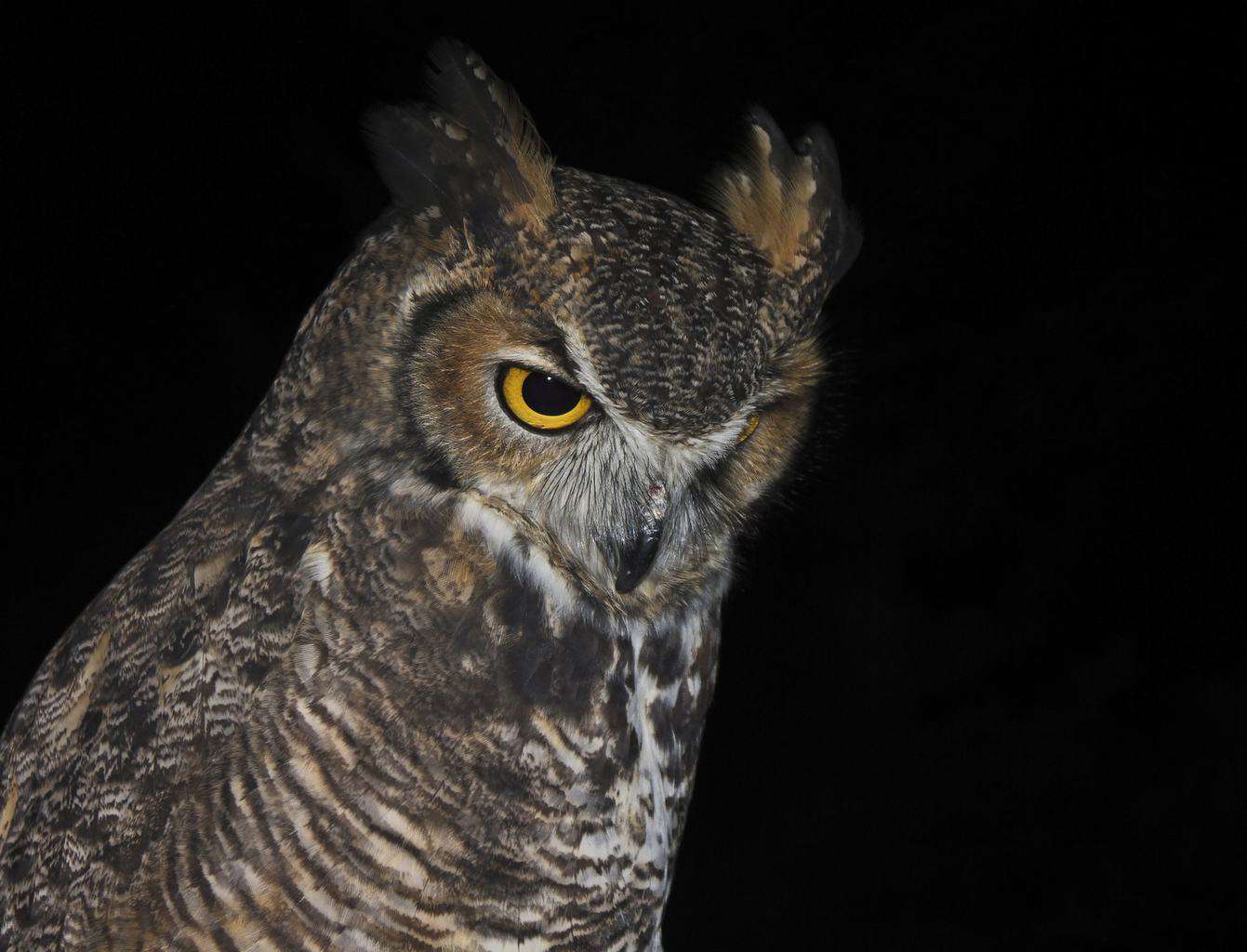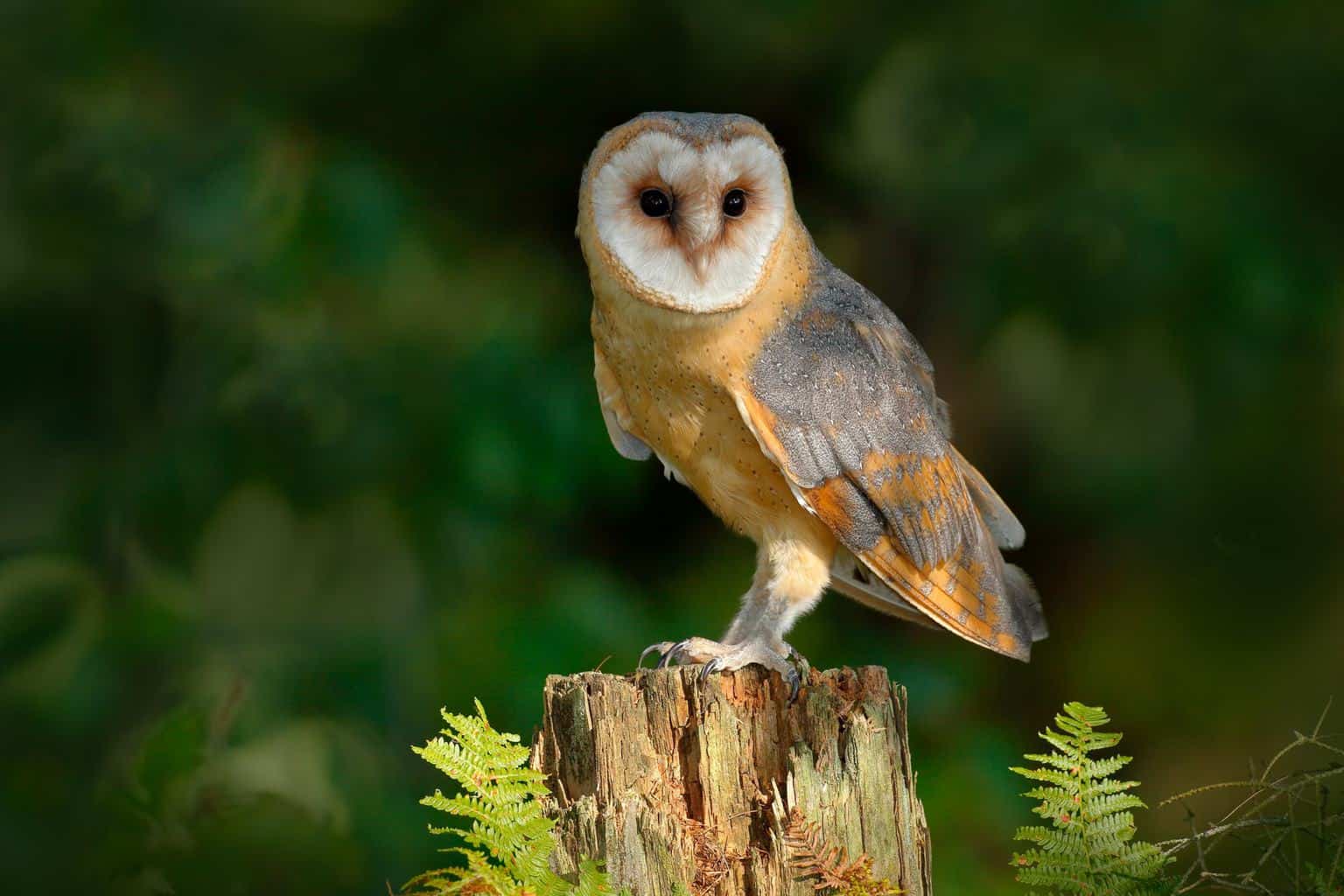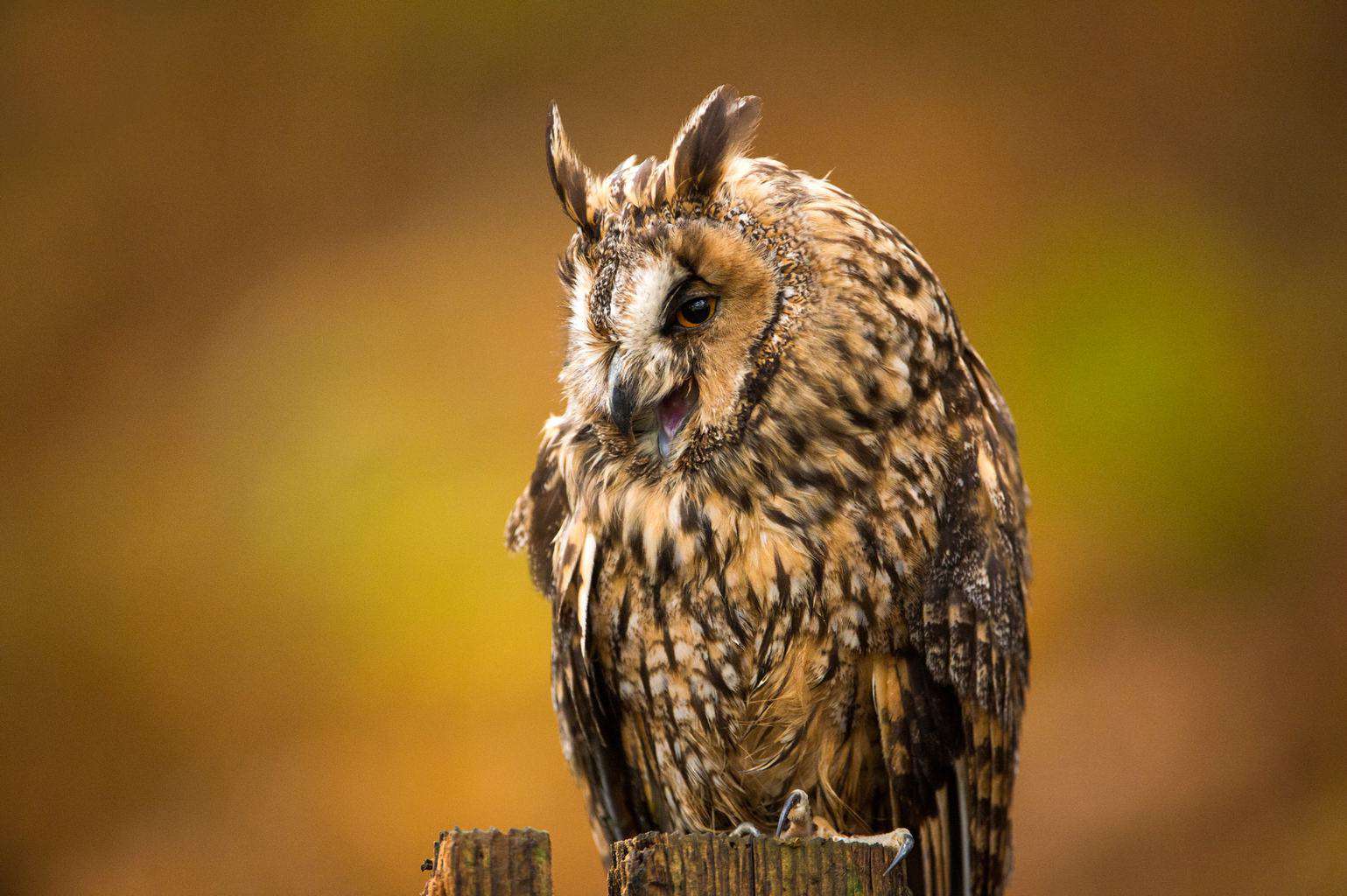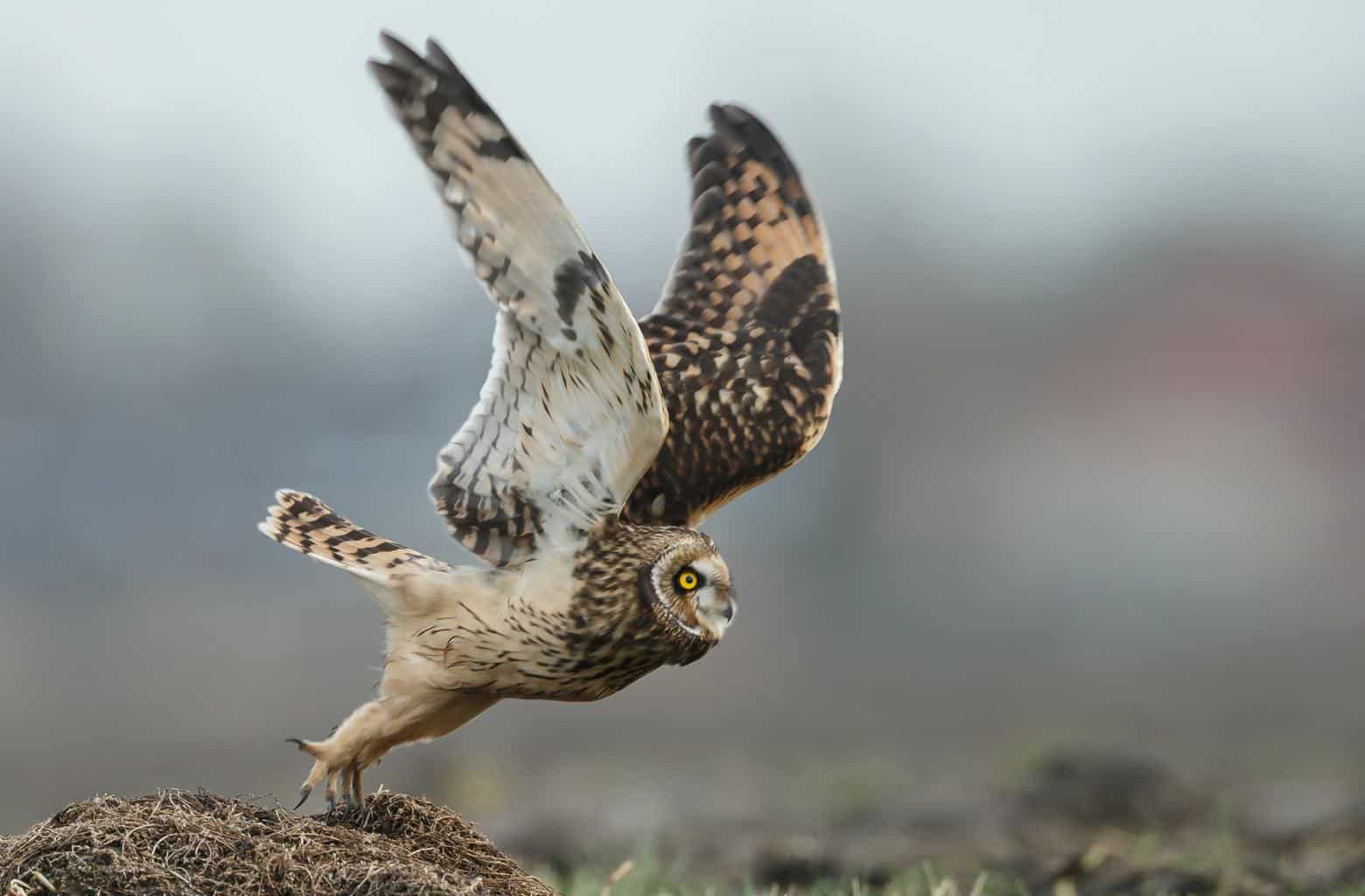Illinois is one of the best places to go to observe owls in the United States, especially in the winter, when a wide variety of birds head there to breed and look for food.
Some of them are classically nocturnal, like the eastern screech-owl and the barn owl, while others only love to get out during the day, like the burrowing owl. Given these preferences, you’re certain to spot at least one or two of the 11 species of owls found in Illinois, and we’re going to give you some information about each of these birds to increase your chances of success in your birdwatching endeavors.
Let’s dive in; you just may meet your new favorite bird species!
Eastern Screech-Owl

- Scientific Name: Megascops asio
- Length: 7-9.8 inches
- Weight: 4.3-8.6 ounces
- Wingspan: 19-24 inches
The eastern screech-owl’s name doesn’t exactly do its call justice. The sound is more like a muffled cry than an annoying screech…but it’s still loud, though.
Eastern screech-owls have a distinct appearance, thanks to their short Batman-lie tufts of feathers on their heads and their nearly non-existent necks. They occur in two colors, red and grey.
The red birds are rather orangey with dark-streaked feathers, and the grey birds’ plumage sports the same dark vertical streaks, allowing them to blend seamlessly with tree bark for the perfect camouflage.
Screech-owls love to nest in hollow trees, so in Illinois, you’ll find this species of owls wherever trees can be found, even in residential areas!
Great Horned Owl

- Scientific Name: Bubo virginianus
- Length: 17-25 inches
- Weight: 32-88.2 ounces
- Wingspan: 39.8-57 inches
The great horned owl looks like a grumpy old man. It’s one of the easiest owls to recognize, too, as it resembles the stereotypical evil owl of books and movies. Each of the stereotypical scary owl traits — scary looks, pointy earlike tufts of feathers, and intimidating yellow eyes — it’s got them all.
Not only is their appearance intimidating, but great horned owls’ behavior is, as well. In fact, they can eat animals larger than themselves! But they also enjoy small rodents, bats, squirrels, and even ducks.
Camouflage is essential for predators. That’s why you won’t easily spot a great horned owl on a tree — because its black and white striped plumage is indistinguishable when it’s on a tree.
Barred Owl

- Scientific Name: Strix varia
- Length: 17-19.7 inches
- Weight: 16.6-37 ounces
- Wingspan: 39-43.4 inches
Do you know how owls are emblematic of wisdom and wit? The barred owl is probably the perfect visual representation of that, as it’s a big bird with soulful eyes, elegant plumage, and significantly loud hooting.
You can identify barred owls by their calls, classic sounds that seem to be asking, “Who cooks for you?”
For owls, hooting is a way to mark their territory, and given that they don’t travel much, it’s only natural for barred owls to hoot a lot. They inhabit forested habitats and wooded areas with a preference for shallow waters where they can prey on crayfish.
This bird’s head is circular with no ear tufts, its eyes are dark brown or black, and its bill is yellow. It also sports beautiful barred brown and greyish-brown plumage.
Northern Saw-Whet Owl

- Scientific Name: Aegolius acadicus
- Length: 7-8.3 inches
- Weight: 2.3-5.3 ounces
- Wingspan: 16.6-19 inches
The northern saw-whet owl is an Illinois resident, especially abundant in the southern two-thirds of the state during the wintertime. The bird is nearly the size of a woodpecker, but stockier and heavier, and it’s considered one of the smallest owl species on the planet.
Northern saw-whet owls have round heads that are large compared to their tiny bodies. They have no tufts of feathers on their heads, and they’re known for their big eyes comprised of black and yellow concentric circles.
These birds’ plumage is rusty brown with white spots to help them blend into their surroundings. However, they’re strictly nocturnal, so you won’t come across them during the day anyway.
They primarily feed on small mammals, like rats and shrews.
Barn Owl

- Scientific Name: Tyto alba
- Length: 12.6-15.8 inches
- Weight: 14-24.7 ounces
- Wingspan: 39.4-49.2 inches
Unfortunately, barn owls are endangered in the state of Illinois, but because they’re so common that they’re present in pretty much all 50 states, there’s still a chance you’ll spot one.
Staying true to their names, barn owls’ preferred habitat is abandoned barns. That’s why farmers love having the bird around: it keeps their properties free from rodents! But their continuous exposure to pesticides in a farm environment probably plays a role in their endangerment.
Barn owls are known for their heart-shaped faces with buffy rims. This heart shape helps steer sound to the owl’s ear, which drastically improves its prey-locating skills. Barn owls are strictly nocturnal, and this species of birds are known for its exceptional ability to locate prey in total darkness.
They have tawny backs with subtle black and white spots. Usually, females are larger and darker than males, but both sexes have annoying screechy hoots.
Snowy Owl

- Scientific Name: Bubo scandiaca
- Length: 20.5-28 inches
- Weight: 56.4-104 ounces
- Wingspan: 49.6-57 inches
Breathtakingly beautiful is the only way to accurately describe the next species on our list of Illinois owls. As the species’ name suggests, snowy owls are covered in soft plumage that echoes their arctic origins. It has a circular head with a flat face, and its plumage features some dark marks on its backs. Interestingly enough, as they age, these white owls get even whiter.
You can find snowy owls along the shorelines of lakes and on agricultural fields. They usually prefer wide landscapes with minimal trees. When it comes to prey, snowy owls can catch flying birds in the air, and they generally feed on the birds they catch and small mammals.
Though not easily found all year long, you can spot one or two snowy owls during the winter in northern Illinois. They’re mostly idle birds, and you can find them sitting, blinking their yellow eyes at something for a while.
Long-Eared Owl

- Scientific Name: Asio otus
- Length: 13.8-15.8 inches
- Weight: 7.8-15.3 ounces
- Wingspan: 35.4-39.4 inches
The arrival of long-eared owls in Illinois marks the start of winter. They usually arrive in December and stay until February. While they’re spread across a bunch of states, you’ll certainly find them in the state between November and March.
They’re among the most social owl species, as they live in clusters, yet they’re among the hardest owls to spot as they hide in dense foliage and remain silent for long periods.
Long-eared owls are medium-sized, nearly the size of a crow. They’re smaller than the great horned owl but bigger than the screech-owl. They have catlike features, especially their facial disk structure and pointy ear tufts.
Short-Eared Owl

- Scientific Name: Asio flammeus
- Length: 13.3-17 inches
- Weight: 7.3-16.9 ounces
- Wingspan: 33.5-43 inches
Short-eared owls are so well acquainted with humans, you might even find them at airports.
Native to Illinois, short-eared owls are endangered because of the destruction of their natural habitats. They’re threatened in New York state as well, and there are efforts to preserve some of them in areas with a good supply of rodents they can feed on.
Short-eared owls live in grassy fields and pines, as they prefer short vegetations and coastal grasslands. They’re among the few owl species that prefer hunting during the day, and they rely on small mammals, especially voles, for food.
They’re medium-sized birds with tiny tufts of feathers that look a bit like short ears, hence their name, and their plumage has heavy dark bearings. When it comes to hooting, it resembles a cat’s mating call.
Burrowing Owl

- Scientific Name: Athene cunicularia
- Length: 7.5-9.8 inches
- Weight: 5.3 ounces
- Wingspan: 21.6 inches
Burrowing owls are also fans of grass and agricultural lands with low vegetation. They love to nest and roost in burrows (caves), which is where their names came from.
They have small bodies with long legs and mottled brown feathers with sand-colored spots. The birds’ most distinctive feature is probably their yellow eyes and bills.
Similar to the short-eared species, burrowing owls are more active during the day. They spend most of their day on the ground, and they hunt small animals, especially invertebrates while staying close to the ground. Insects constitute most of their diet.
Northern Hawk Owl

- Scientific Name: Surnia olula
- Length: 14.2-17.7 inches
- Weight: 8.5-16 ounces
- Wingspan: 28 inches
The northern hawk owl is known for its long and pointy tail. The name comes from its resemblance to the hawk, both in appearance and behavior. This owl hunts like a hawk, monitoring prey from one perch to another, then it determines the right moment to attack it in one lightning-fast move.
They’re medium-sized birds with white faces surrounded by dark rims. Their backs are dark brown with beige spots, and their bellies are buffy white with horizontal brown stripes.
Boreal Owl

- Scientific Name: Aegolius funereus
- Length: 14.2-17.7 inches
- Weight: 8.5-16 ounces
- Wingspan: 28 inches
Boreal owls are skillful predators that move from one perch to another until they spot the perfect prey and glide rapidly to grab it. Its asymmetrical skull structure aids in directing the sound of its potential meal to its ears to help it spot it more accurately.
The primary habitat of the boreal owl is the boreal forest, so look for its brown and white spotted plumage that contrasts its white and brown barred underparts among the trees.
In conclusion
While most owls are strictly nocturnal, some of them go hunting during the day. Both types of these predatory birds exist in Illinois, and this kind of variety makes the state appealing for bird enthusiasts.
If you decide to visit Illinois for some good old birdwatching, consider looking for woodpeckers there, too; you won’t be disappointed!

